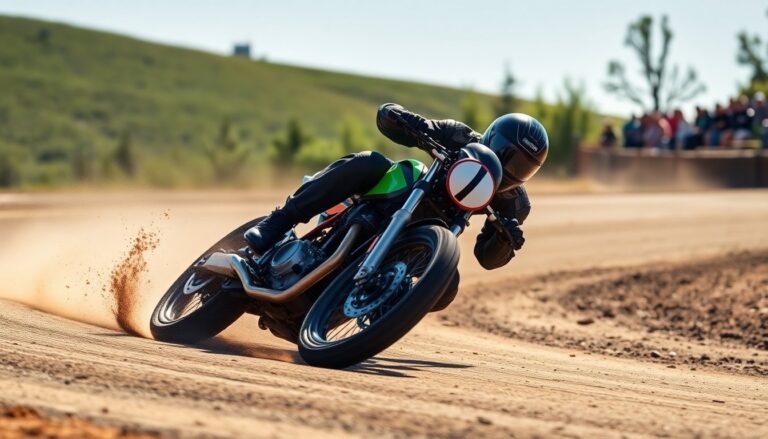Argomenti trattati
The evolving landscape of Moto3 racing
Moto3 racing is currently facing significant challenges related to rider size and the limitations of existing machinery. As the sport evaluates potential changes in technical specifications, the conversation has turned to the viability of flat-track bikes as a possible solution. The Kawasaki 650cc Parallel Twin and the Yamaha 690cc Parallel Twin have both achieved notable success in American Flat Track. Their performance may provide insights for revitalizing the Moto3 category.
Rider size and machine compatibility
The Moto3 class was established to attract younger riders, originally allowing participants as young as 15 years old. Over time, the age limit has increased to 18, highlighting a significant trend: many competitors are now too large for the small, lightweight 250cc single-cylinder machines produced by Honda and KTM. These machines weigh approximately 185 pounds and generate around 55 horsepower. As riders transition to the more robust Moto2 class, featuring 330-pound, 765cc engines, they face a considerable challenge.
The need for change
The disparity between the two classes leaves many riders struggling to adapt, given the significant differences in power and weight. Dorna Sports S.L., the governing body of MotoGP, acknowledges the need for revisions in the technical regulations. Plans are in place to replace the existing 250cc machines by 2028, although a clear direction for their successors has yet to be established.
Exploring alternatives: The Kawasaki and Yamaha twins
Among potential replacements, the Kawasaki 650cc Parallel Twin emerges as a proven winner. Since its introduction in 2006, it has consistently excelled in races, securing its reputation among racers and fans. Similarly, the Yamaha 690cc Parallel Twin has gained recognition, winning the AFT Production Twins Championship in both 2019 and 2021, in addition to claiming the AFT SuperTwins Championship in 2025.
Cost considerations for new regulations
One significant factor influencing the shift in Moto3 regulations is the cost of racing machines. As expenses have soared, there is an ongoing discussion about establishing a price cap for new machines. Initially proposed at $88,000, this cap is now likely to be reduced to approximately $59,000. This new budget aims to produce bikes that are lighter, around 120 kg, and capable of delivering about 90 horsepower. This represents a stark contrast to current machines, which can cost up to $205,000.
Kawasaki EX650: a competitive racing option
The Kawasaki 650 Twin has proven its versatility across multiple racing formats. In 2009, the American Motorcyclist Association engaged Bill Werner, a former Harley engineer, to create a more affordable alternative to the expensive Harley-Davidson XR750s used in American Flat Track. By leveraging the Kawasaki EX650, Werner developed a competitive machine that significantly lowered costs, with total expenditures around $6,000 compared to the XR750’s $25,000 price tag.
This initiative culminated in a notable victory at the Indianapolis Mile in 2010, marking Kawasaki’s successful entry into the Grand National scene. The swift adoption of the EX650 by other racers highlighted its potential, as an increasing number of competitors chose Kawasaki as their motorcycle of choice.
Success at the Isle of Man TT
The Kawasaki 650 Twin has made a significant impact at the Isle of Man TT. Since its introduction in 2012, the Lightweight class has allowed 650cc Twins, resulting in Kawasaki models dominating the competition. By 2014, they were nearly the sole entrants, reflecting their performance and competitiveness.
The evolving landscape of Moto3
Discussions surrounding the future of Moto3 are intensifying. The inclusion of Kawasaki 650 or Yamaha 690 engines into upcoming regulations is becoming a viable option. Their success in both flat track and road racing, combined with affordability and availability, positions them as strong contenders. Furthermore, Paton has introduced a competitive chassis for the Kawasaki engine, signaling a potential transformation in the Moto3 category.
The transition to a new twin-cylinder platform in Moto3 appears to be on the horizon, whether it involves Kawasaki or Yamaha. The consistent performance of these machines across various racing disciplines suggests a bright future for the class. This development aligns with the objectives of Dorna to improve competition and make racing more accessible for emerging riders.

